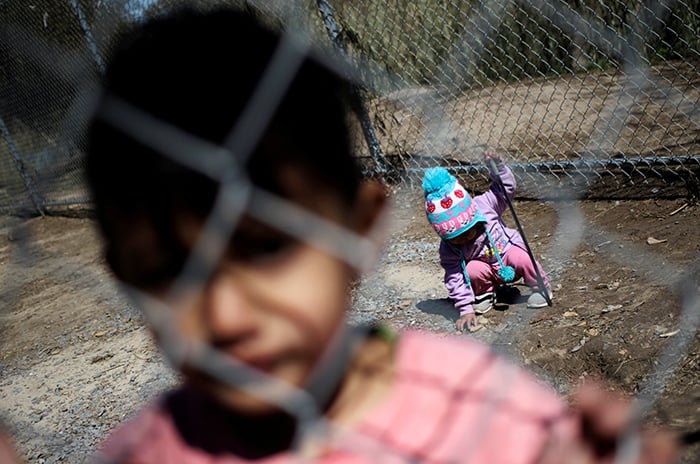Rising numbers of minors entering the United States prompts concern for unaccompanied children who do not have viable sponsors.
By Rhina Guidos, Catholic News Service
WASHINGTON (CNS) — A Catholic agency has collaborated with a professor from The Catholic University of America on a report pointing out deficiencies but also opportunities in the care of unaccompanied migrant children in the United States.
The report, “A Vision Forward: Policies Needed to Protect the Best Interests of ‘Category 4’ Unaccompanied Immigrant Children,” focuses on minors who crossed the border but have no family or a custodian waiting to claim them.
Without a home to go to, the Department of Health and Human Services’ Office of Refugee Resettlement places the children in facilities.
However, rising numbers of minors entering in general — 17,847 registered minors recorded as of May 26 — have prompted concerns, particularly for “protecting unaccompanied children whom the government has determined do not have viable sponsors.”
Catholic University, with help from the U.S. Conference of Catholic Bishops’ Migrant and Refugee Services agency, worked on the report, which points out recommendations, including better collection of information on the population; access to legal help; family- and community-based care, as opposed to large-scale facilities; and ending detention for those who reach 18, when they age out of the system. The report says those 18 to 21 should be helped with independent living conditions.
Stacy Brustin, a professor of law, who also is director of the university’s Immigrant and Refugee Advocacy Clinic at the Columbus School of Law, wrote the report. She traveled to the southern border with students to provide legal help to migrant families, said a news release from the university.
“Decades of research show that children in the care of the state need small, familylike settings to recover from the trauma they have endured,” Brustin said. “Yet unaccompanied immigrant children without sponsors, many of whom have experienced extreme violence in their home countries and have valid legal claims to stay in the U.S., spend too much time in large, congregate settings where they are at risk of being traumatized again.”

Migrant children seeking asylum in the U.S. are seen at a migrant encampment in Matamoros, Mexico, Feb. 19, 2021. (CNS photo/Daniel Becerril, Reuters)
Some have experienced violence, trafficking, gang recruitment, extreme poverty, and natural disasters at home, “often enduring long, dangerous journeys along the way,” the news release said.
The report says an increase in unaccompanied minors is likely to continue “given the ongoing violence, poverty and natural disasters afflicting the Northern Triangle countries of Honduras, Guatemala and El Salvador,” where the majority of minors come from.
“These changes are not only in the best interests of immigrant children but in the best interests of our country,” Brustin said.
“Children who make (the journey) unaccompanied to the U.S. are extremely resourceful and resilient young people,” she continued. “With care, stability, and legal status they can make significant contributions to our economy and society.”
“Time and again during our interviews,” she said, “we heard stories of unaccompanied children who, when placed with supportive foster families, attended school, acquired legal status and went on to finish high school or college, obtain employment, pay taxes and contribute meaningfully to their communities.”
Featured image: Unaccompanied child migrants play soccer at a temporary housing facility in Midland, Texas, April 8, 2021. (CNS photo/Paul Ratje, Reuters)

